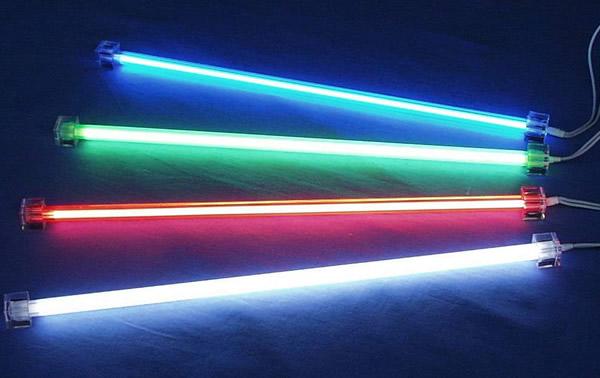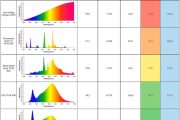The Concept of Light
Light is an electromagnetic wave that has the duality of waves and particles. Like all other waves, light waves have wavelengths, denoted by λ. The most commonly used unit for light waves is the nanometer (nm). A spectrum is obtained by arranging the wavelengths of light waves in order from shortest to longest. In the spectrum, γ-rays, x-rays, ultraviolet rays, visible light, infrared rays, radio waves, etc. appear in order from short to long wavelengths.
Visible Light
Visible light is light that can be observed with the naked eye without the aid of any equipment. The wavelength range is about between 380nm and 760nm. The transmittance we are talking about now is also for visible light. Transmittance refers to the transmittance of visible light.
When all visible light strikes the eye together, we perceive it as white. Light with longer wavelengths of visible light entering the eye is perceived as red, and light with shorter wavelengths entering the eye is perceived as purple. When the wavelength of light is gradually shortened from 760nm to 380nm, there are 7 colors of red, orange, yellow, green, cyan, blue, and purple in sequence, and we can see a colorful world.
Near Infrared Light
Near-infrared light (NIR) is an electromagnetic wave between the visible and mid-infrared regions. The division of its wavelength range in different literatures is not the same. The American Society for Testing and Materials (ASTM) stipulates that it is 780 to 2526 nm. NIR is often divided into short-wave near-infrared (SW-NIR) and long-wave near-infrared (LW-NIR). Its wavelength ranges are 700-1100 nm and 1100-2500 nm, respectively.
Chemiluminescence
Chemiluminescence is the light radiation produced by the absorption of chemical energy by a substance molecule. Any chemiluminescence reaction includes two key steps, chemical excitation and luminescence. Therefore, for a chemical reaction to become a luminescent reaction, two conditions must be met: First: the reaction must provide sufficient energy (170-300KJ/mol). Second, these chemical energies must be absorbed by a substance molecule to generate electronically excited states with sufficient fluorescence quantum yield.
Fluorescence
Fluorescence is a cold luminescence phenomenon of photoluminescence. When a substance at room temperature is irradiated by incident light of a certain wavelength (usually ultraviolet or X-ray), it absorbs light energy and enters an excited state, and immediately de-excites and emits outgoing light with a wavelength longer than that of the incident light (usually the wavelength is visible light band). And once the incident light is stopped, the luminescence phenomenon disappears immediately. Outgoing light with this property is called fluorescence. In daily life, people usually refer to all kinds of weak light as fluorescence in a broad sense.
Biolight
Bioluminescence can be divided into two categories: one is passive luminescence, and the other is active luminescence. Light is a kind of energy, and active light emission is a kind of consumption of energy.
In 1885, Dubois extracted the luciferin and luciferase of fireflies in the laboratory, pointing out that the firefly’s light is a chemical reaction.
Chemiluminescent substances have two energy states, the ground state and the excited state, the former has a low energy level and the latter has a high energy level. Generally speaking, molecules in the excited state have high and unstable energies, and they can easily release energy to return to the ground state. We see bioluminescence when energy is released in a prior form.
Light Color
Light and color appear together, and without light there would be no color. The color of opaque objects is due to reflected light, and the color of transparent objects is due to transmitted light. Red lenses allow red wavelengths of light to pass through, while other colors of light are reflected or absorbed. Green lenses allow green wavelengths of light to pass through, while other colors of light are reflected or absorbed.
Basic Unit of Light
1. Luminous Intensity (Luminosity, I)
The luminous intensity of a point light source in a certain direction is the amount of light emitted by the illuminant in a unit time, also referred to as luminosity. The common unit is candela (cd, candela). An international candle is defined as the luminosity emitted by a candle made of whale fat burning 120 grains per hour, one grain being equal to 0.0648 grams.
2. Luminous flux (φ)
The energy emitted by a point or non-point light source per unit time. Among them, the radiant flux that can be produced by the visual person (the radiant flux that people can feel) is called the luminous flux. The unit of luminous flux is lumens (abbreviated lm), and 1 lumen (or lm) is defined as the luminous flux passed by a light source of an international standard candle within a unit solid arc angle. Since the entire spherical area is 4πR2, the lumen luminous flux is equal to 1/4π of the luminous flux emitted by a candle. In other words, the spherical surface has 4π, so according to the definition of lumens, it can be known that a cd point light source will radiate 4π lumens, that is, φ (lumen) = 4πI (candle light). Assuming that △Ω is a small solid arc angle within the △Ω solid angle, and the luminous flux △φ, there is △φ=△ΩI.
3. Optical density
Optical density is the light absorption value, also called absorbance. Refers to the degree to which a substance or solution absorbs light. The higher the concentration, the more light is absorbed and the greater the absorbance. In a certain range, the absorbance is proportional to the concentration of the solution, so it is often used to measure the concentration of the solution.







